Isosceles Triangle
An isosceles triangle is a triangle that has two sides of equal length. These two equal sides are called the legs, and the third side is called the base. The angles opposite the equal sides are also equal.
Properties of Isosceles Triangle
- Two sides are of equal length
- Two angles are of equal measure
- The angle opposite the base is called the vertex angle
- The base angles (angles that have the base as one of their sides) are equal to each other
Formulas for Isosceles Triangle
In an isosceles triangle with base b and legs a, the following formulas apply:
Perimeter = 2a + b
Area = (b/4) * √(4a^2 - b^2)
Example Problem
Find the perimeter and area of an isosceles triangle with base length of 6 cm and each leg length of 5 cm.
Perimeter = 2 * 5 cm + 6 cm = 10 cm + 6 cm = 16 cm
Area = (6/4) * √(4*5^2 - 6^2) = (6/4) * √(100 - 36) = (6/4) * √64 = 6 * 8 = 48 cm2
Practice Problems
- Find the perimeter and area of an isosceles triangle with base length of 8 cm and each leg length of 10 cm.
- If the vertex angle of an isosceles triangle measures 60 degrees, what are the measures of the base angles?
- Find the area of an isosceles triangle with base length of 12 cm and each leg length of 9 cm.
◂Math Worksheets and Study Guides Fifth Grade. Algebra
Study Guide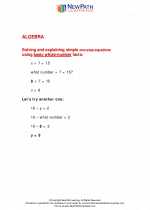 Algebra
Algebra  Activity Lesson
Activity Lesson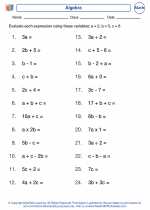 Algebra
Algebra  Activity Lesson
Activity Lesson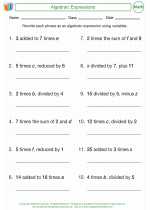 Algebraic Expressions
Algebraic Expressions  Activity Lesson
Activity Lesson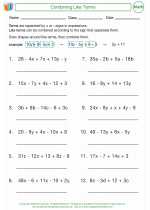 Combining Like Terms
Combining Like Terms  Activity Lesson
Activity Lesson Building a Nest Egg
Building a Nest Egg  Worksheet/Answer key
Worksheet/Answer key Algebra
Algebra  Worksheet/Answer key
Worksheet/Answer key Algebra
Algebra  Worksheet/Answer key
Worksheet/Answer key Algebra
Algebra  Worksheet/Answer key
Worksheet/Answer key Introduction to Algebra
Introduction to Algebra  Worksheet/Answer key
Worksheet/Answer key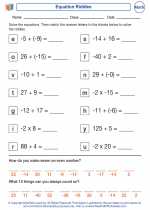 Equation Riddles
Equation Riddles  Worksheet/Answer key
Worksheet/Answer key Inequality Graphs
Inequality Graphs  Worksheet/Answer key
Worksheet/Answer key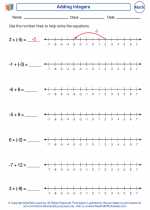 Adding Integers
Adding Integers  Vocabulary/Answer key
Vocabulary/Answer key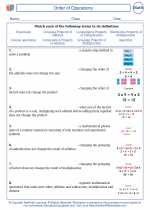 Algebra
Algebra 

 Activity Lesson
Activity Lesson
 Activity Lesson
Activity Lesson
 Activity Lesson
Activity Lesson
 Activity Lesson
Activity Lesson
 Worksheet/Answer key
Worksheet/Answer key
 Worksheet/Answer key
Worksheet/Answer key
 Worksheet/Answer key
Worksheet/Answer key
 Worksheet/Answer key
Worksheet/Answer key
 Worksheet/Answer key
Worksheet/Answer key
 Worksheet/Answer key
Worksheet/Answer key
 Worksheet/Answer key
Worksheet/Answer key
 Vocabulary/Answer key
Vocabulary/Answer key

The resources above cover the following skills:
Number and Operations (NCTM)
Understand meanings of operations and how they relate to one another.
Understand various meanings of multiplication and division.
Identify and use relationships between operations, such as division as the inverse of multiplication, to solve problems.
Connections to the Grade 5 Focal Points (NCTM)
Algebra: Students use patterns, models, and relationships as contexts for writing and solving simple equations and inequalities. They create graphs of simple equations. They explore prime and composite numbers and discover concepts related to the addition and subtraction of fractions as they use factors and multiples, including applications of common factors and common multiples. They develop an understanding of the order of operations and use it for all operations.